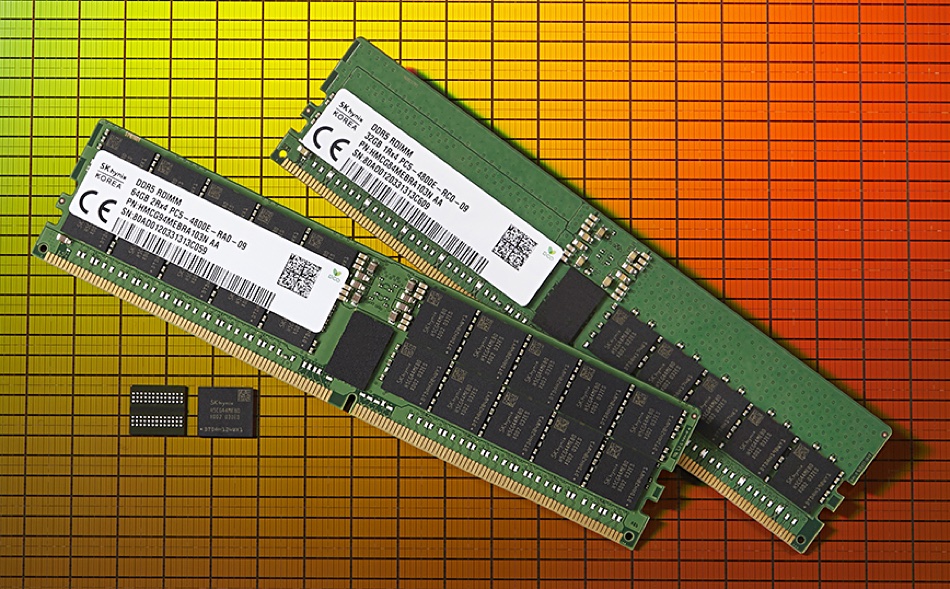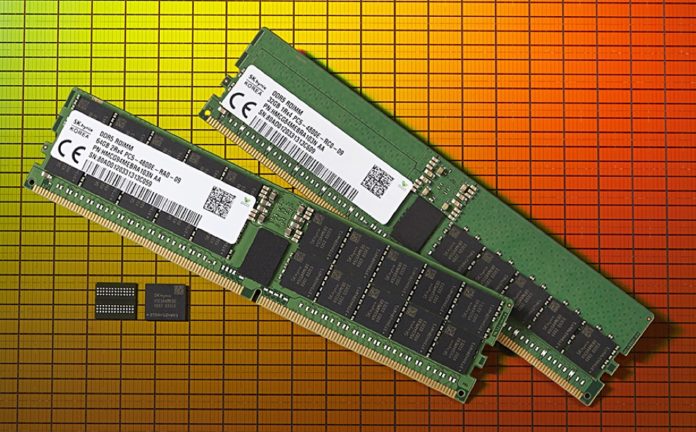SK hynix has shipped the world’s first DDR5 DRAM – which is up to 80 per cent faster than its DDR4 predecessor.
DDR5 (Double Data Rate 5) has double the bandwidth and capacity of the current DDR4 memory. The more DRAM capacity and the higher the speed the better, as server and PC CPUs can get through more work with less waiting for memory contents to be read or written.
Micron started sampling its DDR5 chip in January 2020 and will surely launch DDR5 DRAM products soon.
Research house Omdia predicts DDR5 will account for 10 per cent of the total global DRAM market in 2022, increasing to 43 per cent in 2024.

SK hynix’s DDR5 chip supports transfer rates of 4,800- 5,600 Megabit-per-second (Mbps or megatransfers/sec), which is 1.8 times faster than the previous DDR4 generation. Operating voltage is 1.1V -20 per cent lower than the 1.2V of DDR4. The SK hynix DDR5 incorporates error correcting code (ECC).
DDR4 megatransfers/sec data rates range from 1600 to 4800 MT/sec. DDR5 increases this to 3200-6400 MT/sec. Blocks & Files expects SK hynix will support the higher DDR5 6400 data rate, in due cours.
DDR4 and DDR5 chips are built into modules called DIMMs (Duel Inline Memory Modules), and effective memory bandwidth is measured across DIMMs, with 1 DIMM per memory channel and 8 channels.
DDR5 3200 will deliver 182.5 GB/sec effective bandwidth from its 3200 MT/s data rate, which is is 1.36 x faster than DDR4 3200. DDR5 4800 will provide 250.9 GB/sec and is 1.87 x faster than DDR4 4800. DDR5 6400 is expected to deliver 298.2 GB/sec bandwidth.
SK hynix first announced its 16Gbit DDR5 DRAM chip in November 2018. It thinks DDR5 chips could be as dense as 256 Gbytes in the future, using a stack of four DRAM dies and through-silicon-via (TSV) technology interconnecting the stack layers.
The company sees 3D stacked memory leading on to high-bandwidth memory (HBM) which uses a silicon interposer to link the memory stack and a CPU or GPU in a System-on-Chip (SoC).








